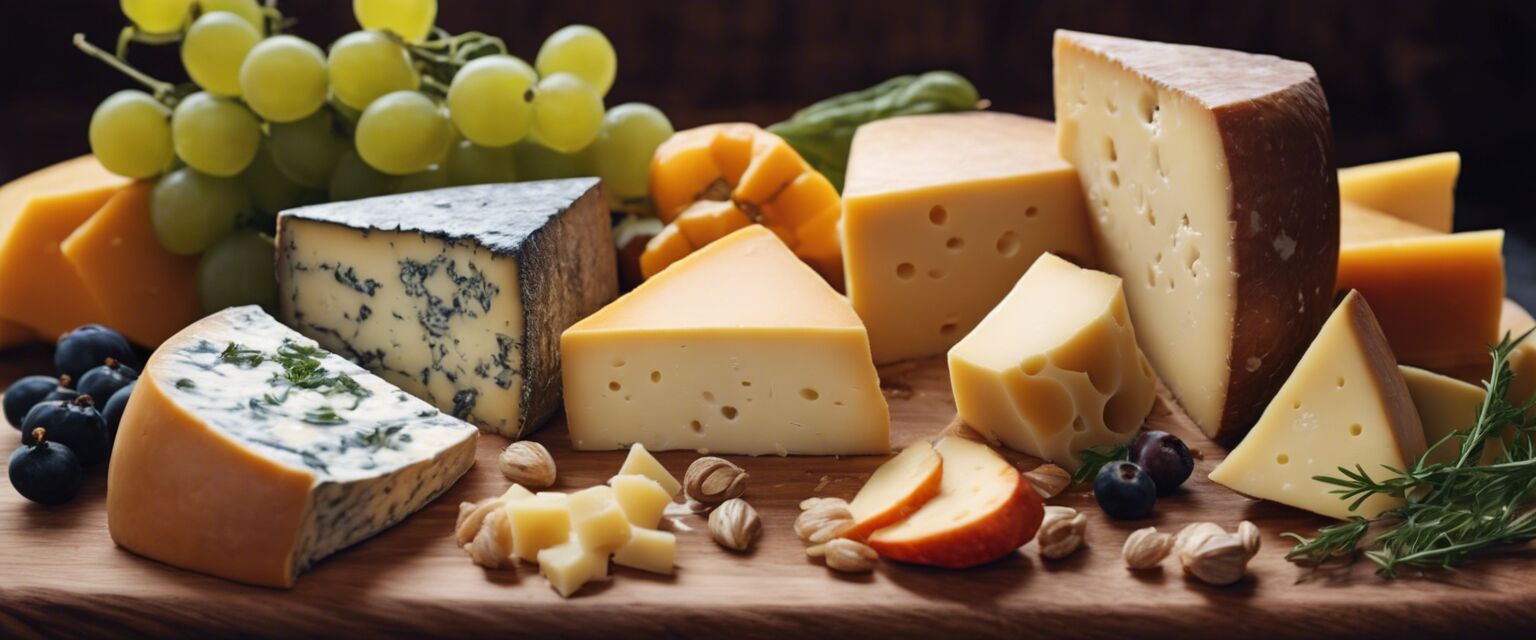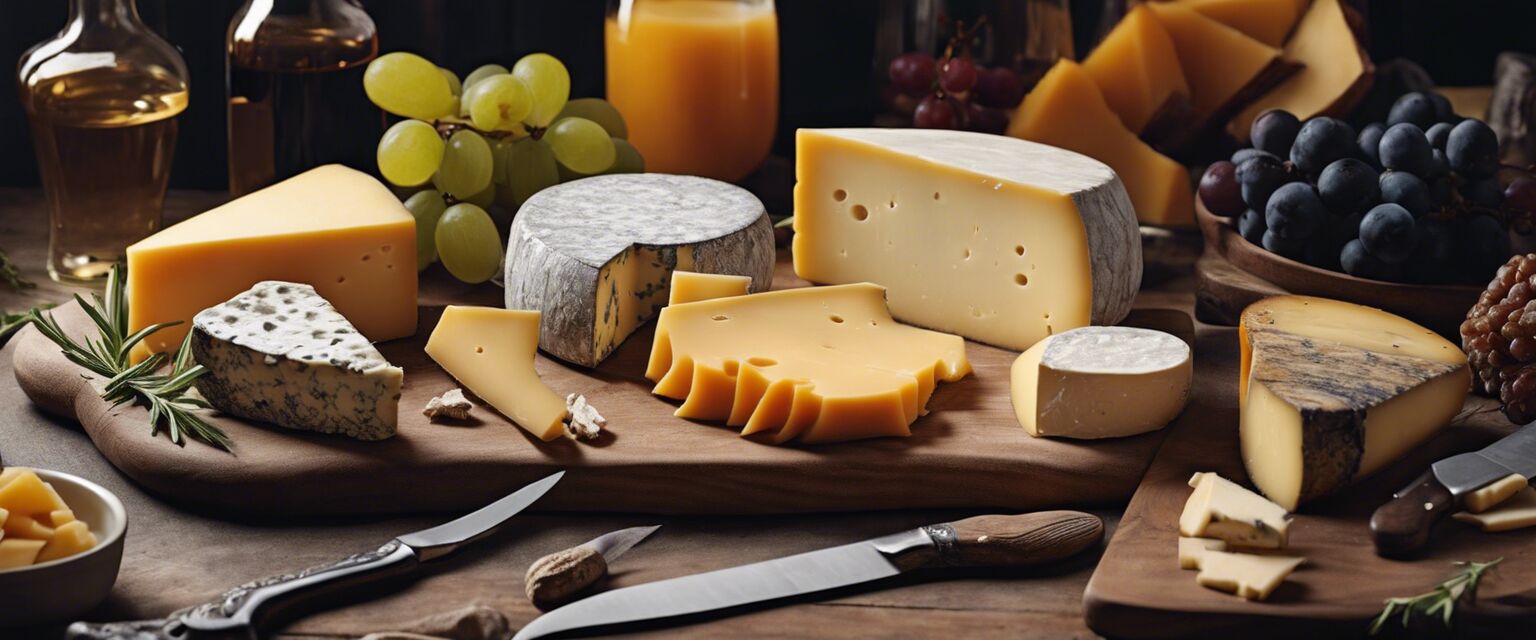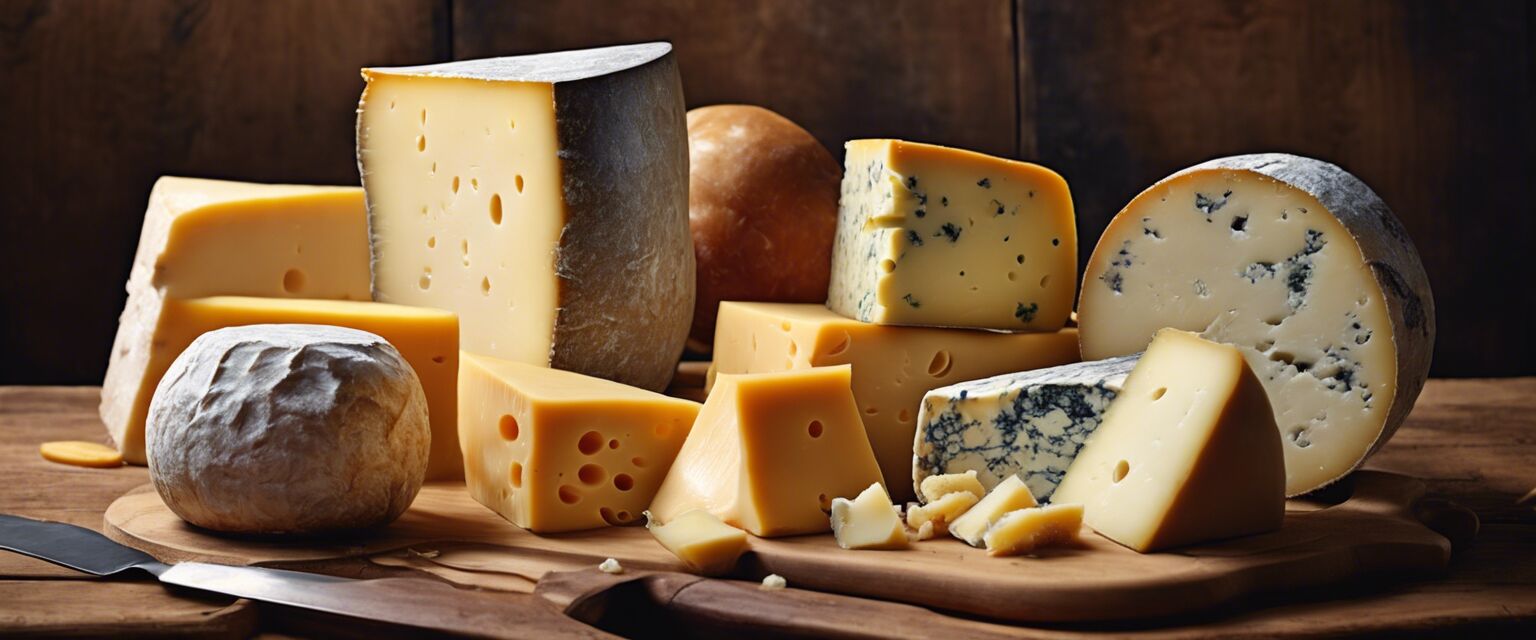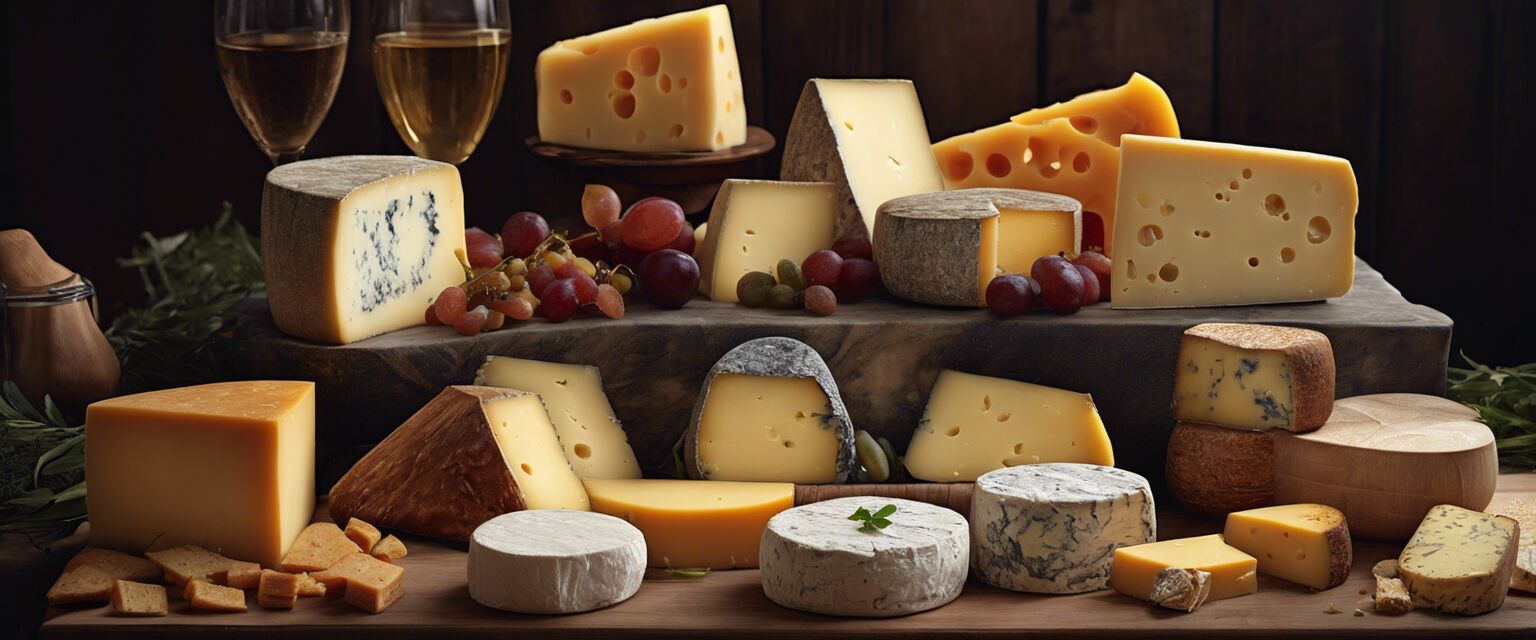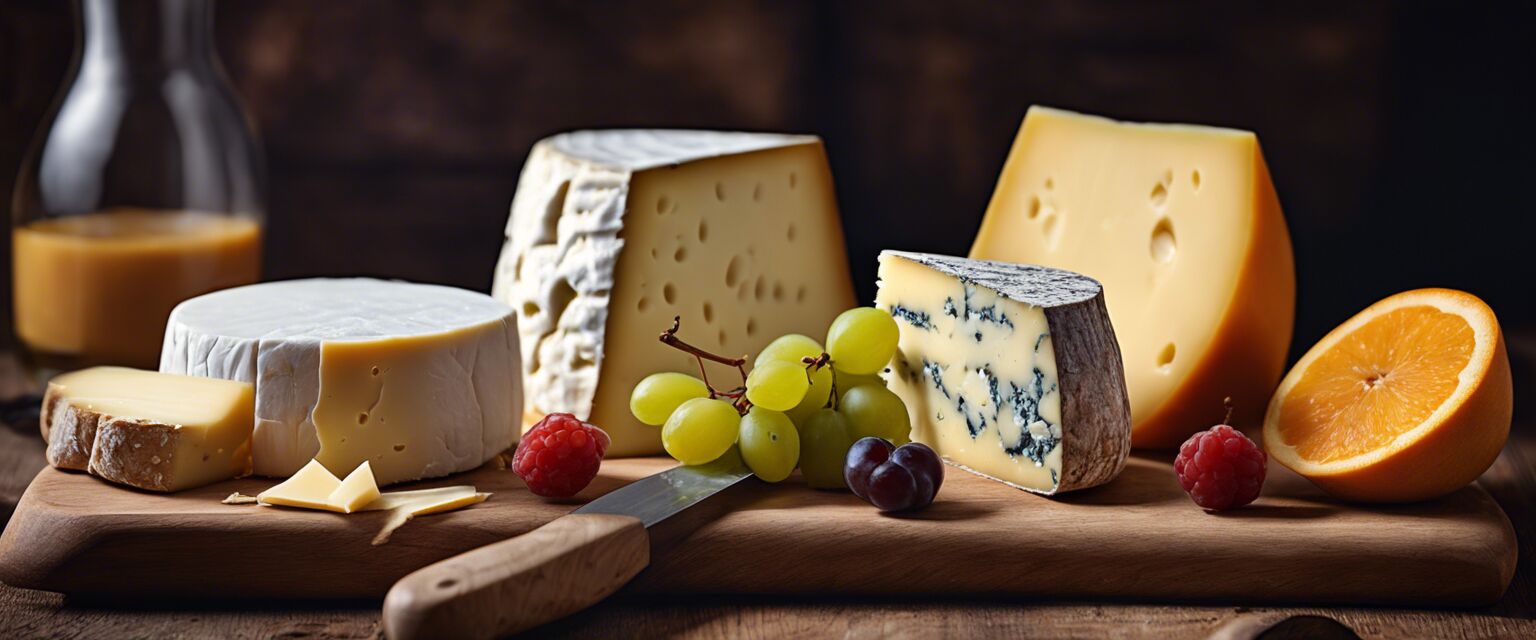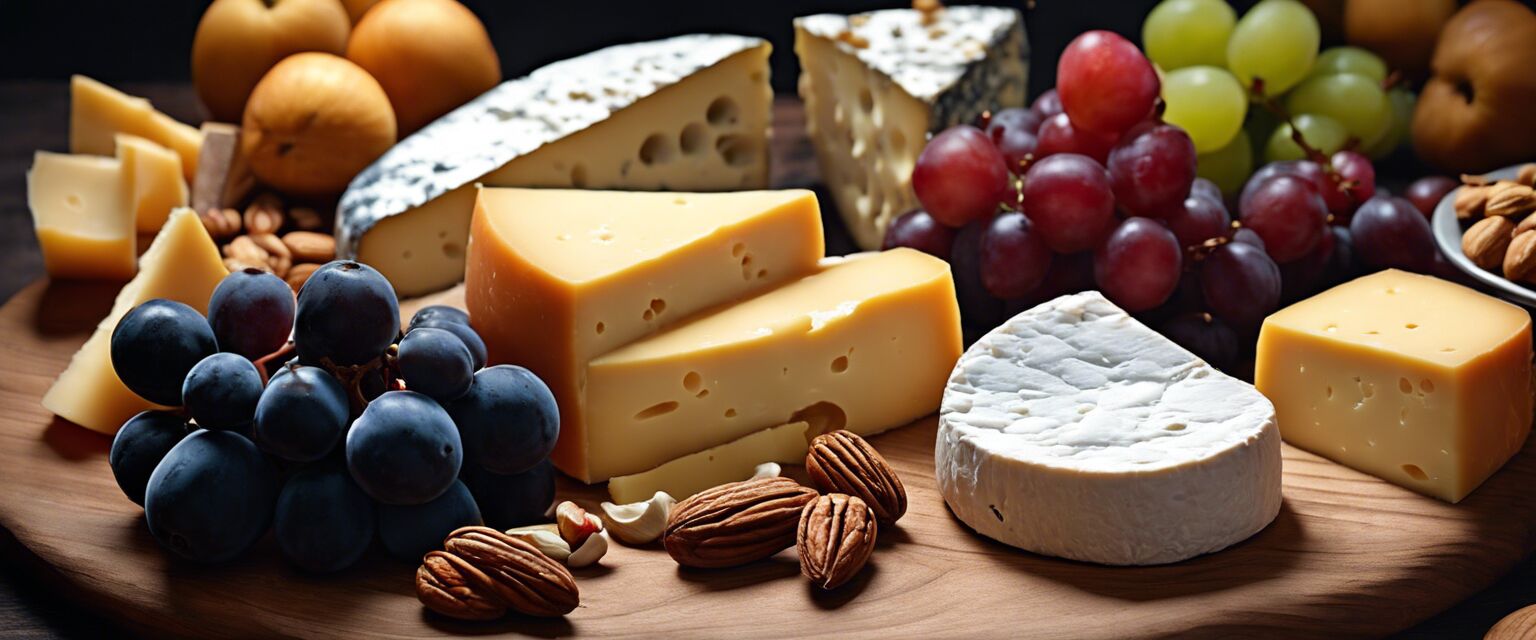
Types of Cheese
Key Takeaways
- Cheese comes in various types, each with unique flavors and textures.
- Understanding cheese origins can enhance your tasting experience.
- Different cheeses pair well with various foods and beverages.
- Cheese is versatile and can be used in numerous recipes.
Cheese is a beloved ingredient around the world, celebrated for its rich flavors and diverse textures. This comprehensive guide explores various types of cheese, their origins, flavors, and uses, helping you make informed choices whether you're a cheese lover, a home cook, or planning a cheese board for your next gathering.
Understanding cheese classifications
Cheese can be classified in numerous ways, such as by texture, milk source, or region of origin. Here are the primary classifications:
- Fresh cheese: Soft and mild, typically unripened.
- Soft cheese: Creamy and spreadable, often with a bloomy rind.
- Hard cheese: Firm and aged, offering complex flavors.
- Blue cheese: Characterized by blue veins of mold, with a strong flavor.
- Processed cheese: Made from natural cheese, combined with emulsifiers.
Types of cheese by texture
| Type of Cheese | Description | Examples |
|---|---|---|
| Fresh Cheese | Soft and creamy, not aged. | Ricotta, Cottage Cheese |
| Soft Cheese | Soft and spreadable, often with a white rind. | Brie, Camembert |
| Semi-Hard Cheese | Firm, but can be sliced or grated. | Cheddar, Gouda |
| Hard Cheese | Firm and aged, with complex flavors. | Parmesan, Pecorino |
| Blue Cheese | Strong flavor with blue veins of mold. | Roquefort, Gorgonzola |
Types of cheese by origin
Cheeses are often categorized by their country of origin, each bringing unique flavors and characteristics. Here are some notable examples:
| Country | Cheese Type | Flavor Profile |
|---|---|---|
| France | Brie | Creamy, buttery |
| Italy | Parmesan | Nutty, savory |
| Switzerland | Gruyère | Sweet, nutty |
| Netherlands | Gouda | Rich, caramel-like |
| United Kingdom | Cheddar | Sharp, tangy |
Cheese flavors and pairings
Understanding how to pair cheese with food and beverages can elevate your culinary experience. Here are some popular pairings:
Pros of cheese pairings
- Enhances flavor profiles.
- Compliments wine and beer choices.
- Makes for a delightful cheese board.
Cons of cheese pairings
- May overwhelm delicate flavors.
- Some combinations may not be appealing.
Popular cheese pairings
| Cheese | Food Pairing | Beverage Pairing |
|---|---|---|
| Brie | Crackers, fruits | Chardonnay |
| Gorgonzola | Walnuts, pears | Port wine |
| Cheddar | Apples, ham | IPA beer |
| Parmesan | Pasta, salads | Chianti |
| Feta | Salads, olives | Sauvignon Blanc |
Cheese recipes to explore
There are countless delicious recipes that feature cheese. Here are a few popular options:
Choosing the right cheese accessories
To fully enjoy cheese, you might consider investing in some useful cheese accessories:
| Accessory | Purpose |
|---|---|
| Cheese knife | For cutting various types of cheese. |
| Cheese board | For serving and displaying cheese. |
| Cheese grater | For shredding cheese for recipes. |
| Cheese dome | To keep cheese fresh while serving. |
| Cheese marker | To label different types of cheese. |
Conclusion
With so many types of cheese to choose from, understanding their classifications, flavors, and origins can help you appreciate this versatile ingredient even more. Whether youâre enjoying a simple cheese platter or incorporating cheese into your favorite recipes, the journey through the world of cheese is always rewarding.
Tips for cheese lovers
- Experiment with different cheese pairings to discover new flavors.
- Store cheese properly to maintain freshness.
- Attend cheese tastings to broaden your palate.
- Try making your own cheese at home for a fun experience.
- Explore international cheeses for a global taste experience.

